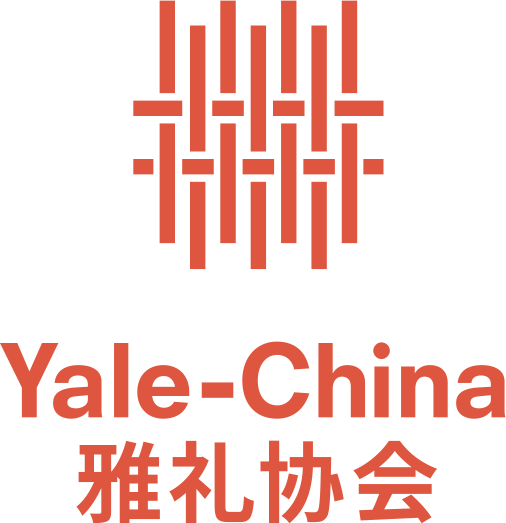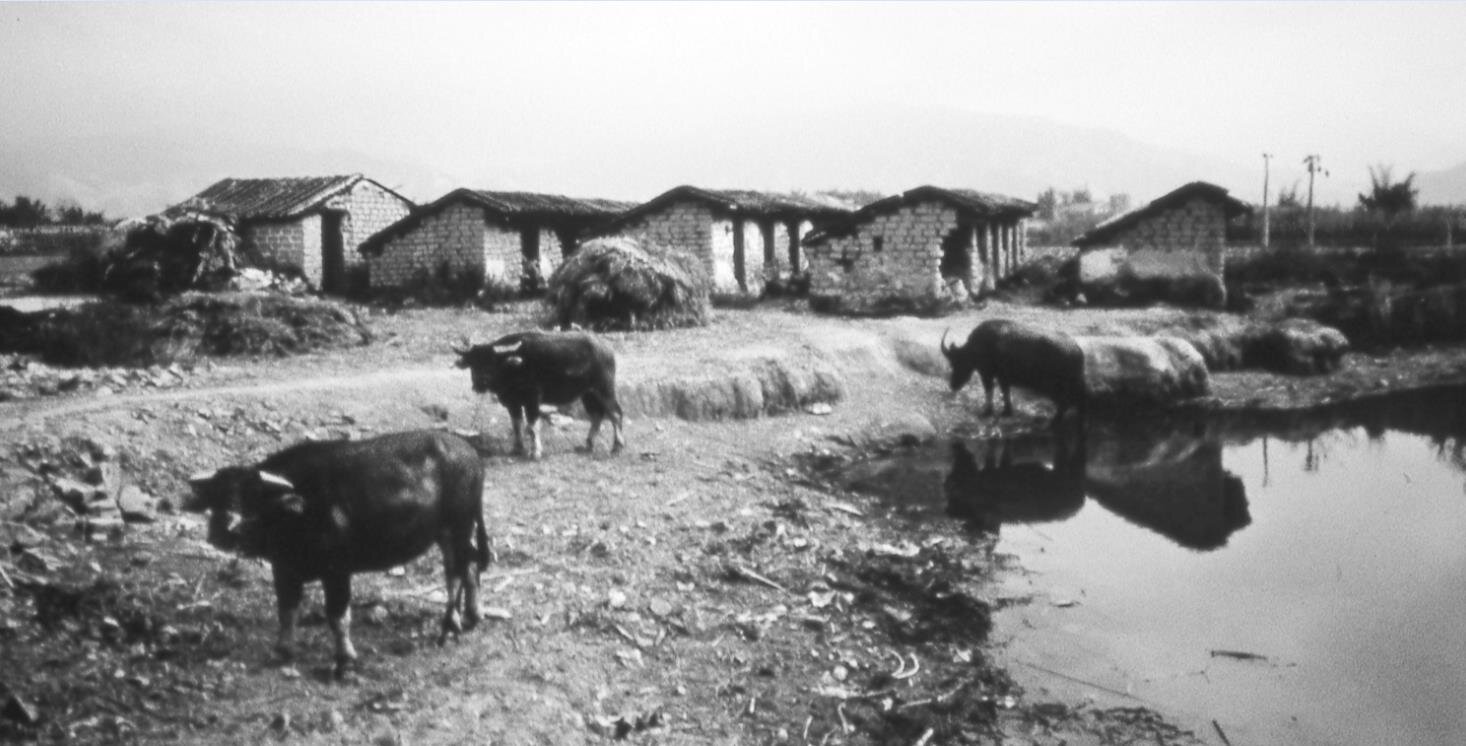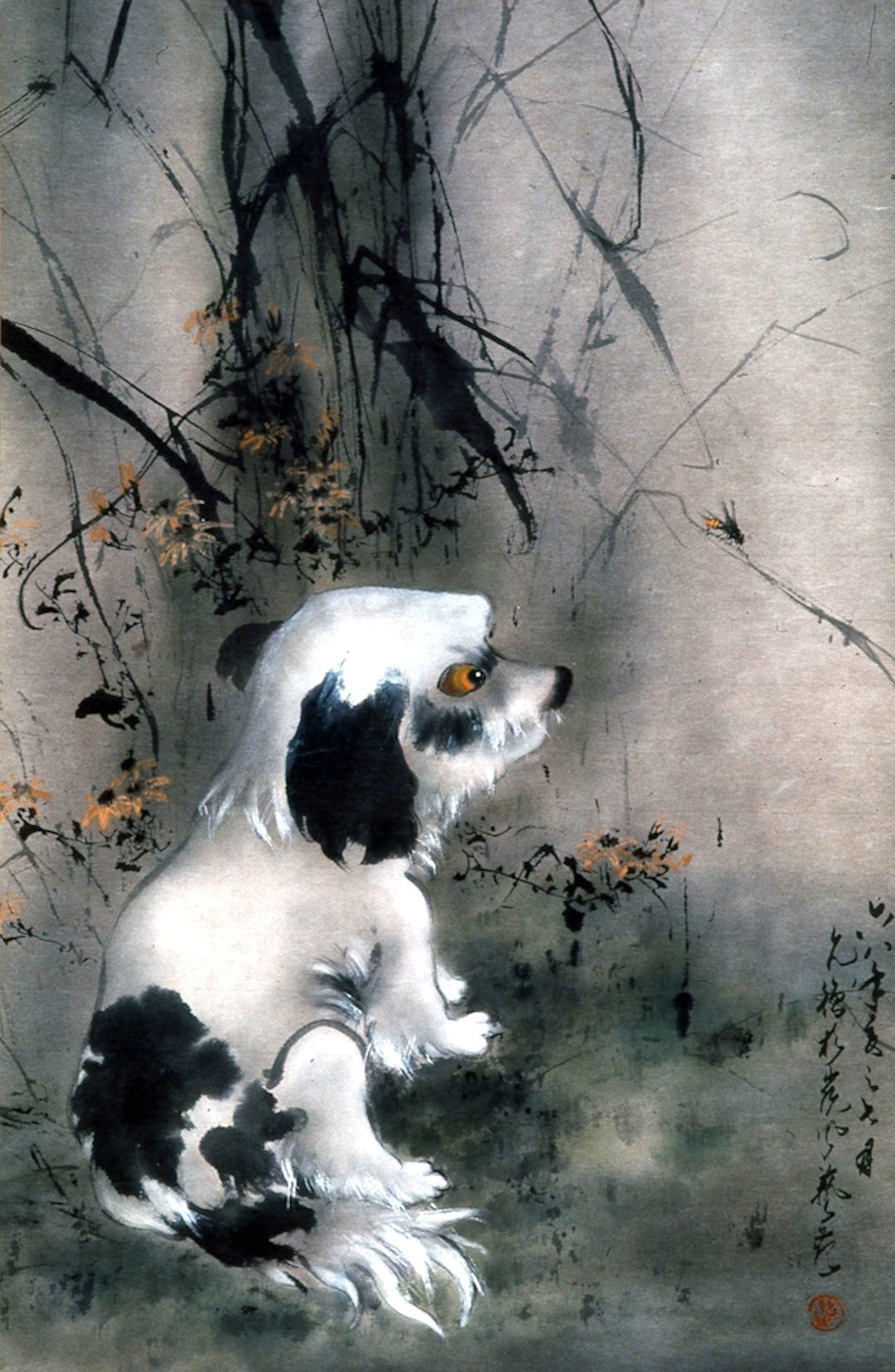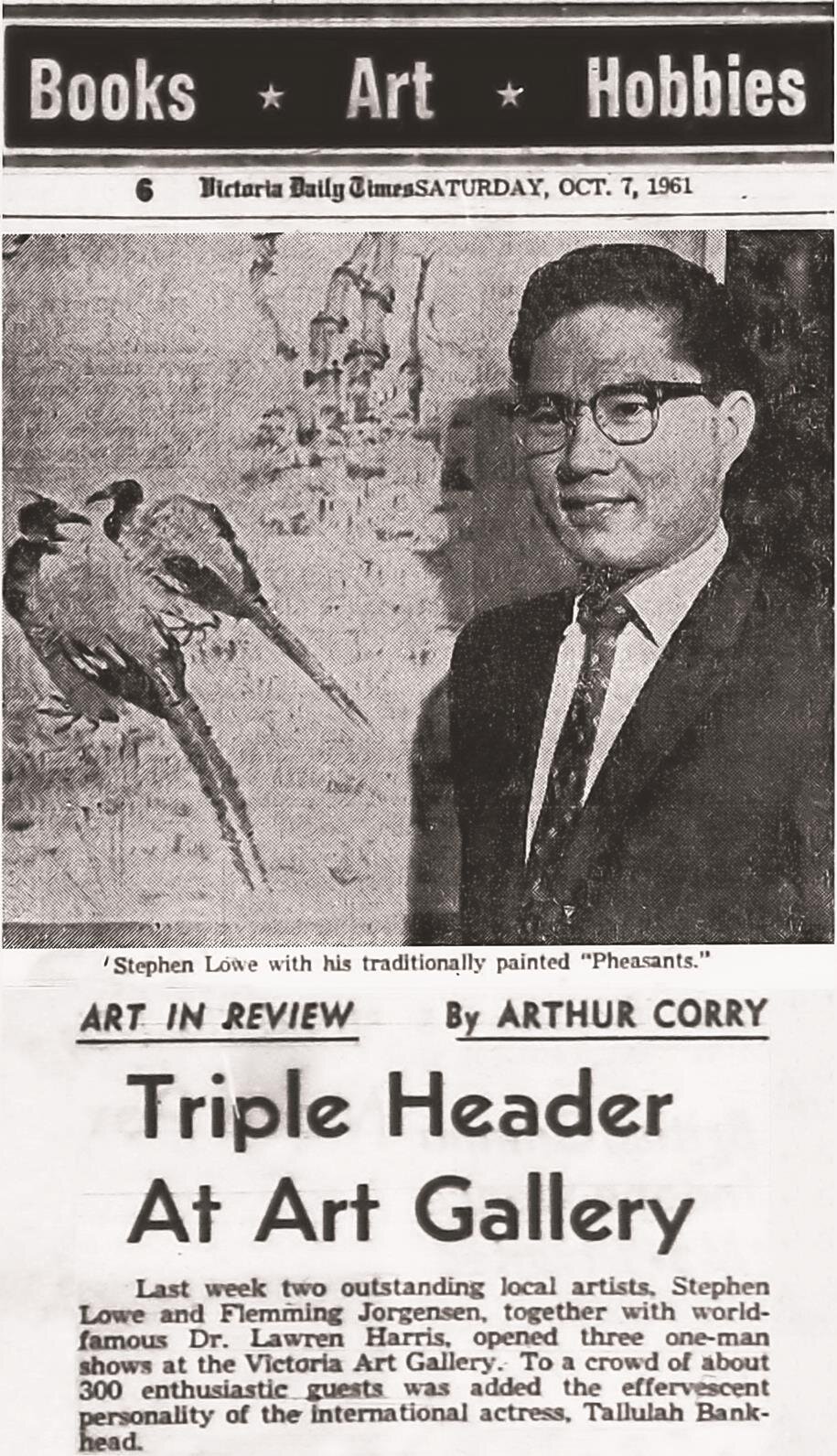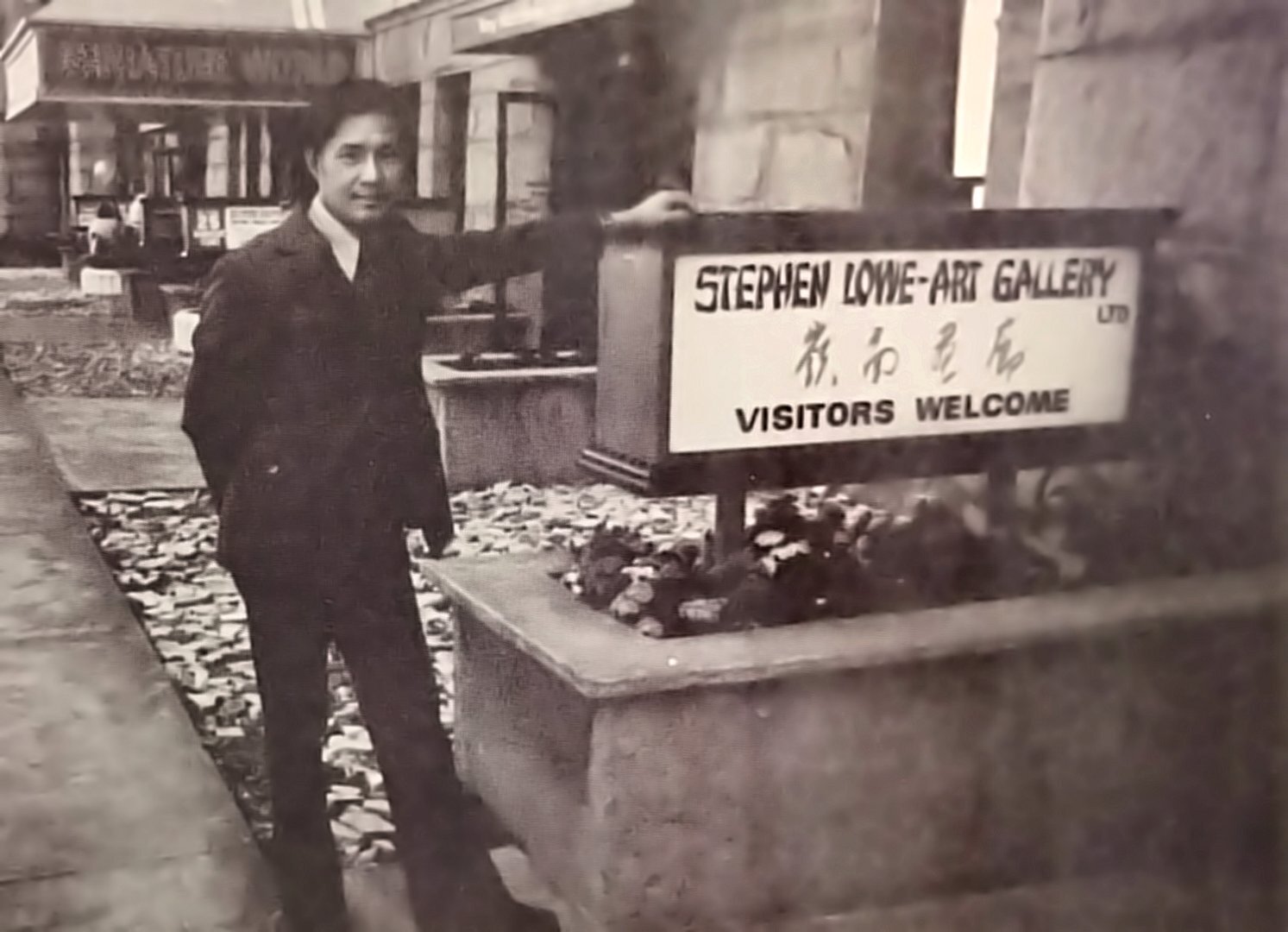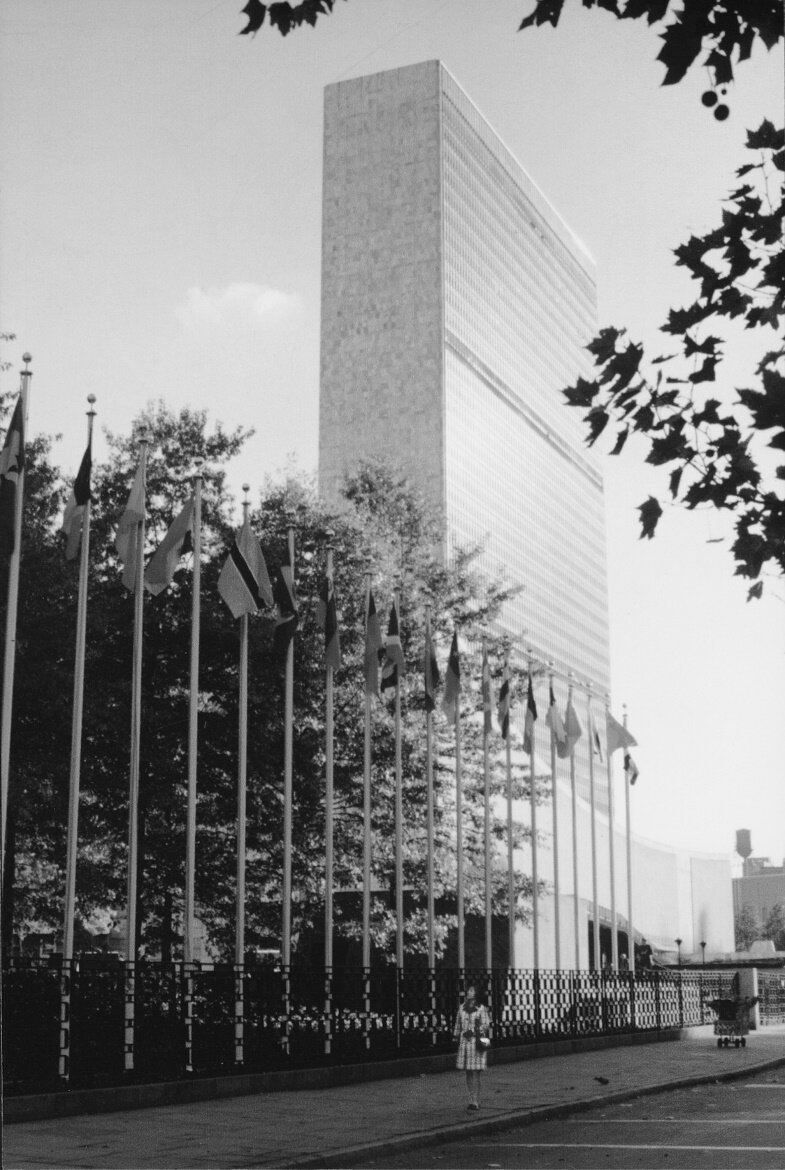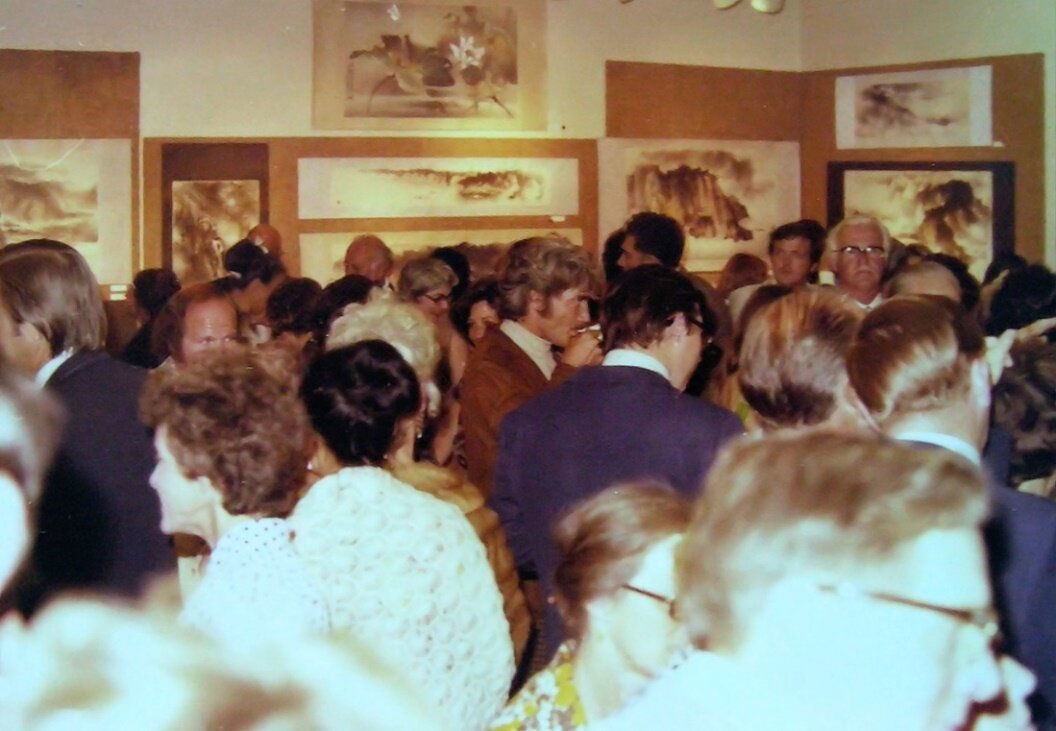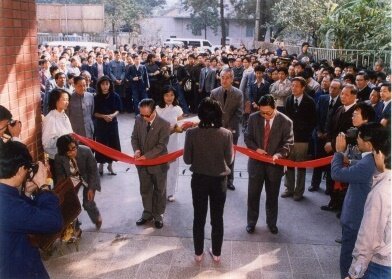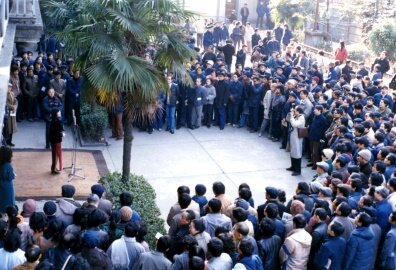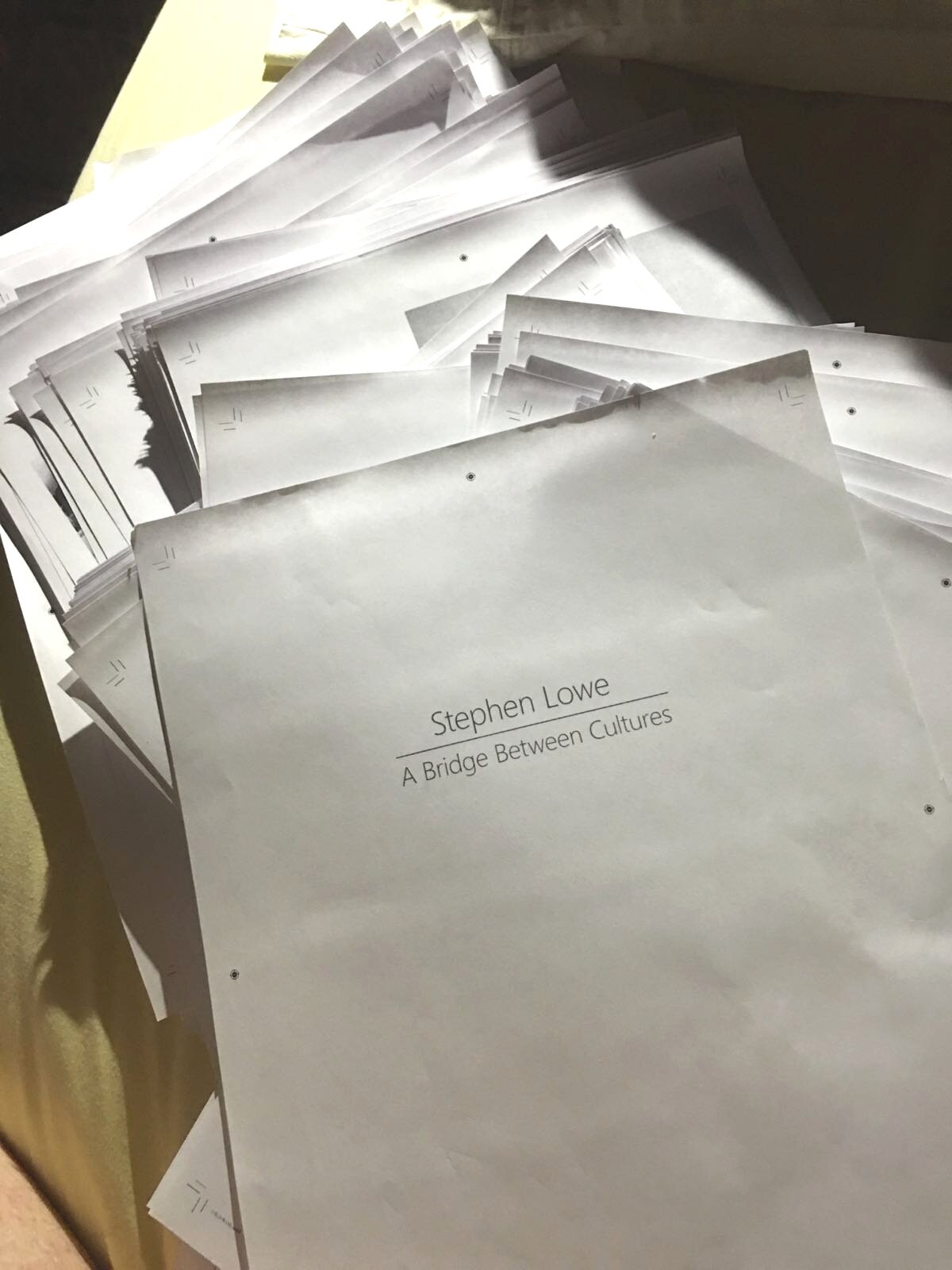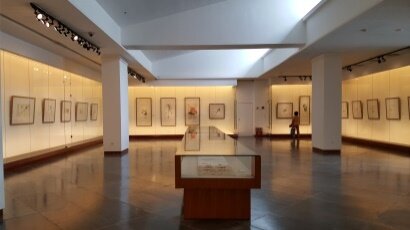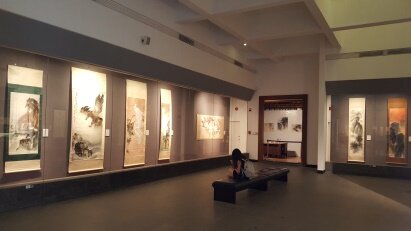Stephen Lowe's Life and Legacy
Stephen and his parents (Liu Huai and Huang Huiyun) prior to his departure to Canada (late 1940s)
Early Beginnings
Stephen Lowe was born in 1938 in the Taishan District village of Bai Hutou in China’s Guangdong Province. In the early 1940s, his family built their home with money sent from Canada by Stephen’s grandfather, Liu Chang. Stephen’s father Liu Huai was principal of the village school while his mother Huang Huiyun worked at home and farmed small plots of rented land nearby.
In rural Bai Hutou, Stephen developed a love for nature and its beauty. As a young boy, he would often stretch out on the back of a water buffalo and daydream or compose poetry. His artistic talent emerged through etched pictures of fish, birds, and insects in roadway dust and sketches on the walls of the family home.
When China’s civil war spread to the Taishan region in the late 1940s, Stephen’s grandfather decided that he should join him in Canada. At age 15, Stephen left his parents and began a three-year journey that would take him to Guangzhou, Hong Kong, and finally, Vancouver Island, Canada.
Arrival in Canada
Grandfather Liu had immigrated to the town Cumberland on Vancouver Island in the early 1900s. He was one of hundreds of Chinese men who labored as coal miners. When Stephen arrived in 1956, coal fortunes had declined, and many residents had abandoned the town.
Stephen was shocked to find his grandfather living in a tiny wooden lean-to. He came to understand the extent of his grandfather’s sacrifice of sending wages back to China while he maintained a meager existence in Canada. Stephen found menial work stocking grocery shelves in nearby Comox. But he reveled in spending his free time exploring the rugged west coast landscapes and fell in love with the region’s untamed beauty.
Victoria, British Columbia
A year after arriving in Cumberland, Stephen fell ill with tuberculosis. This resulted in him being transported to Victoria for treatment. When Stephen was fully recovered, he decided to stay in Victoria. He found work as a room steward at the prestigious Union Club. Stephen’s engaging smile and keen sense of detail quickly made him a favorite of both staff and club members.
Off duty, he spent his time putting brush to paper to depict animals, birds, and flowers. Once established at work, Stephen mustered courage to show his paintings to coworkers and patrons who were taken by the beauty of each piece.
The relationships Stephen built at the Union Club were instrumental to his ultimate success, both personally and professionally. In 1959, the Club supported his request for a temporary leave, and he traveled back to Hong Kong to further his artistic studies with his teacher and mentor Professor Zhao Shaoang.
During his sojourn in Hong Kong, Stephen met Eunice Tam. They bonded over a shared love of nature, art, and poetry. They married in Hong Kong in 1960 then settled in Victoria, B.C., Canada. There, Stephen was soon hired by Eaton’s Co. as their window and display designer.
Review of Stephen’s first solo show at the Art Gallery of Greater Victoria
Early Career
The relationships Stephen had built at the Union Club opened many doors for him to pursue his artistic endeavors. Union Club members and former colleagues asked Stephen for lessons. Lessons were first held in Stephen and Eunice’s modest home, and eventually Stephen was leading instructional programs at the Art Gallery of Greater Victoria and the University of Victoria.
In the fall of 1961, Stephen was invited to stage a solo show at the Art Gallery of Greater Victoria. At just 23 years of age, Stephen joined the iconic Canadian Group of Seven member, Lawren Harris, and Victoria artist, Flemming Jorgensen, for three simultaneous one-man shows at the gallery. This is referred to as an artistic “Triple Header.”
The beauty of Stephen’s Lingnan-style paintings provided a lens into Chinese culture. His work was infused with western influences from his adopted home, such as the use of rich colors, soft washes, and abstracted details. This resulted in a unique style entirely of his creation. It was Stephen’s vision to bridge eastern and western cultures through the universal language of art.
Later Career
In 1969, Stephen took an extended trip to Hong Kong and focused intensely on advancing his artistic technique, reconnecting with the landscape that inspired his creativity. Several months later, Stephen returned to Victoria with more than 200 new paintings and a wealth of learning and practice that would endure throughout his career.
Shortly after his return to Victoria in 1970, Stephen received an invitation to mount a solo exhibition at the newly-opened Royal British Columbia Museum. The museum assigned its three largest salons to accommodate of 150 of Stephen’s paintings, presenting the achievements of one’s artist’s journey between two continents and two cultures.
The exhibition was a runaway success and drew unprecedented numbers of the public from around the world to view Stephen’s Chinese watercolors. It further served as a springboard to launch Stephen’s reputation and generated invitations for him to show elsewhere.
In 1972, after briefly renting a space on the second floor of a Government Street heritage building, Stephen was invited to open a fine art gallery at Victoria’s famed Empress Hotel. And he was able to fulfil his dream of having his own gallery where he could exhibit and sell his paintings.
Stephen continued to hold exhibitions across Victoria and the lower mainland of British Columbia, including solo shows at the B.C. Legislature and the Art Gallery of Greater Victoria.
Stephen’s acclaim continued to gain momentum, and the gallery in the Empress Hotel flourished. He received a steady stream of invitations to exhibit around the world. Most notably, he was invited to mount an exhibition for the Pacem in Terris (Peace on Earth) Gallery at the United Nations headquarters in New York City. In July 1972, the UN presented 60 of his finest paintings. The thriving gallery and exhibitions in Japan, Hawaii, and London kept Stephen and Eunice extremely busy.
A packed house at Stephen’s final show at the Stephen Lowe Art Gallery
Late Life
Stephen’s life was full, both professionally and personally. He was achieving critical and commercial success as an artist. At home, he and Eunice were raising three young children: Anna, David, and Theresa, who were deeply involved in the music program at the Victoria Conservatory of Music. Their home was a hub of activity, and the Lowe family enjoyed a happy and dynamic period.
Then, in the fall of 1974, a dark shadow fell over the family when Stephen was diagnosed with a rare form of lymphoma. Undaunted by the diagnosis, Stephen painted with a singular purpose, producing a flurry of his most beautiful works. Each landscape was astonishing in its ethereal beauty. Birds radiated life and energy while flowers glowed with delicate color.
Despite his failing health, Stephen willed himself to hold what would be his final show. The walls of the Stephen Lowe Art Gallery were hung to the ceiling with 55 of his latest and most breath-taking watercolors. Patrons and friends packed the premises to overflowing. They toasted Stephen’s best-ever works and embraced the man whose life had become a special part of theirs.
On October 9, 1975, at the age of 37, Stephen Lowe slipped away quietly, leaving his vibrant spirit alive in the hearts of those who knew and loved him.
Eunice’s Journey
Although it could have been fitting for Stephen Lowe’s story to end when he died in 1975. It was just the beginning of a journey that his young widow Eunice embarked upon. What Eunice has accomplished in the ensuing 45 years is nothing short of astonishing. It is remarkable tale, driven by Eunice’s passion to share the beauty of Stephen’s paintings with the world. Two years after Stephen’s passing, Eunice published the first art volume The Art of Stephen Lowe while still managing the gallery in Victoria. Eunice steered the gallery into a thriving business that allowed her to provide for her family and to continue sharing Stephen’s legacy. In 1979, she opened a second gallery in Calgary, Alberta where it continues to flourish under the directorship of their eldest daughter Anna and her husband Allen.
Copies of Stephen Lowe - A Bridge Between Cultures in English and Chinese
“The Homecoming Tour”
The Art of Stephen Lowe caught the attention of the elite Artists’ Association of China in 1980. This resulted in an invitation to exhibit Stephen’s work in China’s National Art Museums in four major cities of Beijing, Nanjing, Shanghai, and Guangzhou. After five years of preparation, “The Homecoming Tour,” toured over six months. The retrospective collection of 129 original watercolors received critical acclaim across China.
This historic event was the first time a Chinese-Canadian artist had been invited to present a solo exhibition in China’s leading art museums. In the aftermath of the Cultural Revolution, the exhibit was part of the country’s artistic reawakening. In each city, Eunice and her family received a rock star’s welcome, and thousands of people lined up every day to see the exhibitions.
The Continued Legacy
Over the course of the next two decades, Eunice continued managing the gallery in Victoria, now located in the new Victoria Conference Center, with son David. She accepted invitations to exhibit Stephen’s work in London, New York City, and other notable locations. Meanwhile, the Calgary gallery continued to develop and expand.
Eunice eventually retired from the gallery business in 2003. She turned her attention to the production of another art volume that would tell the story of Stephen’s remarkable journey in English and Chinese. It would also present a more definitive collection of Stephen’s paintings than was published in 1977.
In 2016, on the 30th anniversary of “The Homecoming Tour,” Eunice brought to realization the exquisite art volume Stephen Lowe – A Bridge Between Cultures.
In conjunction with the book’s release, Stephen’s paintings were once again featured in three major solo exhibitions in southern China. “Stephen Lowe – A Bridge Between Cultures,” was hosted by the Guangzhou Museum of Art, the Lingnan Museum of Art, and the Guangzhou Canadian Consulate. How fitting that Stephen’s work be hosted in his home country by a diplomatic office of his adopted country.
Today, Eunice and her family celebrate 50 years since the inception of Stephen’s namesake gallery in Victoria, and 40 years located in Calgary. The gallery proudly represents Canadian artists, many whose work bears influence from their diverse ethnic backgrounds. This reflects the approach that Stephen endorsed, just as he himself was embraced by the B.C. art establishment more than half a century ago.
